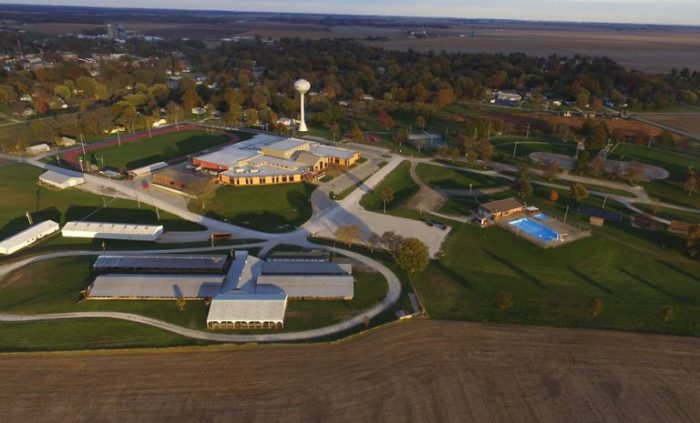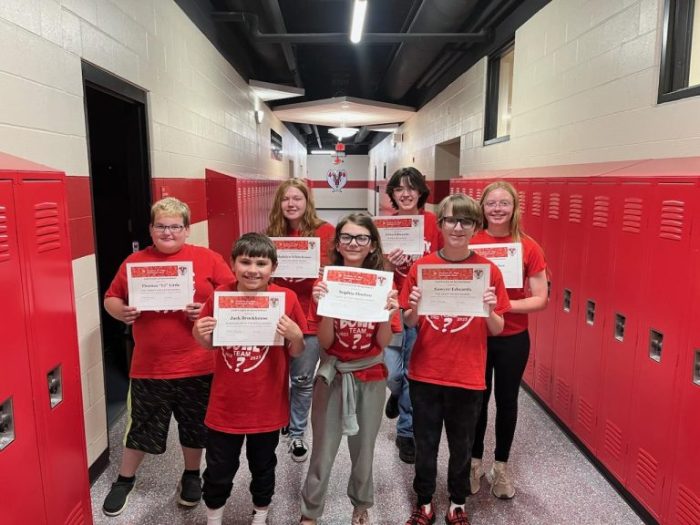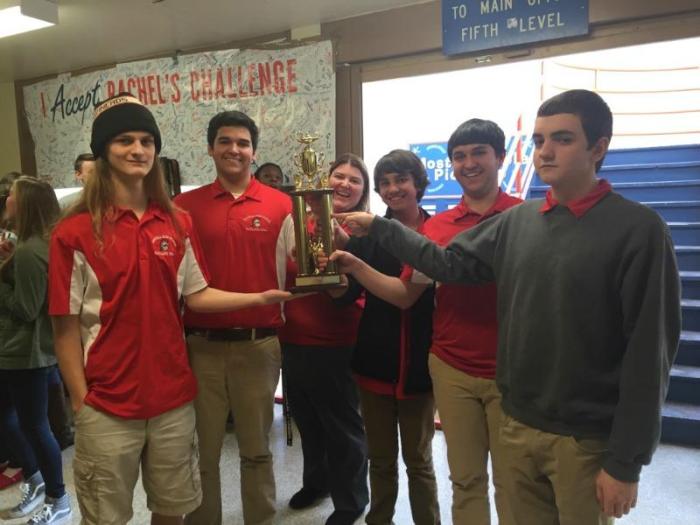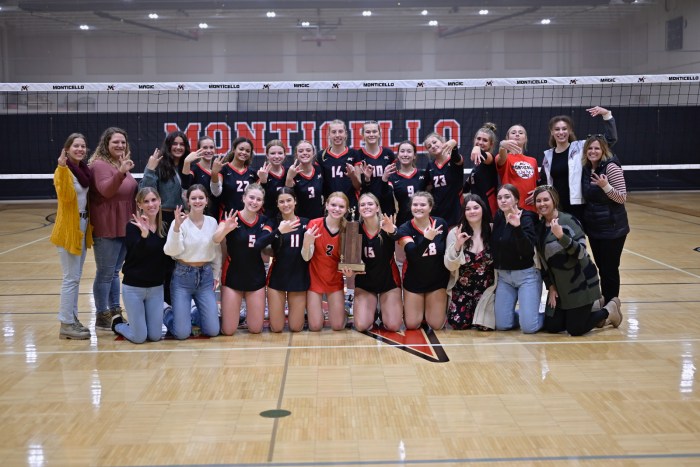Embarking on a journey into the realm of junior high scholastic bowl questions, this discourse aims to illuminate the intricacies of this academic endeavor, providing a comprehensive guide that empowers students to excel in this intellectually stimulating arena.
Scholastic bowl competitions challenge students to showcase their knowledge and critical thinking skills, fostering a love for learning and honing their ability to navigate complex subject matter with confidence.
Types of Questions

In junior high scholastic bowl competitions, questions vary in format and content, testing students’ knowledge across various academic disciplines.
Questions are categorized into several types, each with distinct characteristics and requirements:
Toss-up Questions
Toss-up questions are short, concise questions that require a quick response from a single team member.
Examples:
- What is the chemical symbol for sodium?
- Who wrote the novel “To Kill a Mockingbird”?
Bonus Questions
Bonus questions are more complex and in-depth than toss-up questions and require collaboration among team members.
Examples:
- Describe the process of photosynthesis.
- Explain the significance of the Battle of Gettysburg in the American Civil War.
Multiple-Choice Questions
Multiple-choice questions present several possible answers, from which teams must select the correct one.
Examples:
- Which of the following is NOT a type of igneous rock?
- Who was the first president of the United States?
Short-Answer Questions
Short-answer questions require teams to provide a brief, written response that demonstrates their understanding of the topic.
Examples:
- Define the term “photosynthesis”.
- Explain the concept of the Pythagorean theorem.
Essay Questions
Essay questions are longer, written responses that require teams to analyze and synthesize information, providing a comprehensive answer.
Examples:
- Discuss the causes and consequences of the American Revolution.
- Compare and contrast the Romantic and Victorian literary movements.
Difficulty Levels
Questions in junior high scholastic bowl competitions vary in difficulty, ranging from straightforward to highly challenging. This variety ensures that students of all abilities can participate and be challenged.
The difficulty of a question is typically determined by factors such as the complexity of the topic, the depth of knowledge required, and the level of critical thinking involved.
Easy Difficulty
Easy difficulty questions are designed to test basic knowledge and understanding of a subject. They often involve straightforward facts or concepts that students have likely encountered in their coursework.
- What is the capital of France?
- Who wrote the novel “To Kill a Mockingbird”?
Medium Difficulty
Medium difficulty questions require students to apply their knowledge to solve problems or answer questions that require some analysis and critical thinking.
- Explain the process of photosynthesis.
- Compare and contrast the American Revolution and the French Revolution.
Hard Difficulty
Hard difficulty questions are designed to challenge even the most knowledgeable students. They often involve complex topics, require in-depth knowledge, and demand high-level critical thinking skills.
- Discuss the ethical implications of genetic engineering.
- Analyze the role of social media in shaping political discourse.
Categories

Junior high scholastic bowl competitions encompass a diverse range of categories, each delving into a distinct subject area. These categories provide a comprehensive assessment of students’ academic knowledge and critical thinking abilities.
The categories typically covered in junior high scholastic bowl competitions include:
- Literature:This category explores various literary genres, including poetry, fiction, and drama. It tests students’ understanding of literary devices, themes, and authorial intent.
- Science:The science category covers a wide spectrum of scientific disciplines, including biology, chemistry, physics, and earth science. It challenges students to apply scientific principles, solve problems, and analyze experimental data.
- History:The history category focuses on significant historical events,人物, and movements. It assesses students’ knowledge of chronology, cause-and-effect relationships, and the interpretation of historical sources.
- Math:The math category encompasses various mathematical concepts, including algebra, geometry, statistics, and probability. It tests students’ problem-solving skills, logical reasoning, and computational abilities.
- Social Studies:The social studies category incorporates elements of geography, economics, government, and sociology. It examines human societies, their interactions, and the challenges they face.
- Current Events:The current events category keeps students informed about recent news and global affairs. It assesses their understanding of contemporary issues, their implications, and their historical context.
Scoring System

The scoring system in junior high scholastic bowl competitions aims to reward correct answers and penalize incorrect ones, fostering a competitive environment that encourages accuracy and knowledge.Points are awarded for correct answers, with the value varying based on the difficulty level of the question.
Typically, easy questions are worth 5 points, medium questions are worth 10 points, and hard questions are worth 15 points.Points are deducted for incorrect answers. Incorrect answers to easy questions result in a 2-point deduction, incorrect answers to medium questions result in a 5-point deduction, and incorrect answers to hard questions result in a 10-point deduction.This
scoring system encourages teams to answer questions strategically, weighing the potential points to be gained against the risk of losing points for an incorrect answer.
Strategies and Techniques: Junior High Scholastic Bowl Questions

Success in junior high scholastic bowl competitions hinges on effective strategies and techniques for answering questions and retaining knowledge. By employing these strategies, students can enhance their performance and achieve academic excellence.
To effectively answer questions, students should adopt the following strategies:
- Active Listening:Pay close attention to the question and identify key terms and concepts.
- Question Analysis:Determine the type of question (factual, inference, or evaluation) and the specific information required.
- Knowledge Recall:Access relevant information from memory, using techniques such as association and elaboration.
- Logical Reasoning:Apply critical thinking skills to analyze and evaluate the information, considering multiple perspectives.
- Time Management:Allocate time wisely, prioritizing questions based on confidence and potential points.
To improve knowledge retention and recall, students should consider the following techniques:
Spaced Repetition
Reviewing material at increasing intervals helps strengthen memories. This technique involves revisiting information at specific time points, such as 10 minutes, 1 hour, 1 day, and 1 week after initial learning.
Elaboration
Connecting new information to existing knowledge enhances understanding and retention. This involves explaining concepts in your own words, creating examples, and making personal connections.
Retrieval Practice
Actively recalling information from memory, such as through practice questions or flashcards, strengthens neural pathways and improves long-term retention.
Interleaving
Mixing different subjects or topics during study sessions improves comprehension and prevents forgetting. This technique challenges the brain to make connections and retrieve information from multiple contexts.
Mind Mapping
Creating visual representations of information, such as mind maps or concept diagrams, helps organize and connect ideas, improving both understanding and retention.
Practice and Preparation

Practice and preparation are crucial for success in junior high scholastic bowl competitions. Regular study sessions and access to resources enhance knowledge, improve comprehension, and boost confidence.
To organize effective study sessions, create a dedicated study space, establish a regular schedule, and gather necessary materials. Utilize practice questions, mock competitions, and study groups to reinforce concepts and enhance teamwork.
Resources
Access a variety of resources to expand knowledge and prepare for competitions. Utilize school libraries, online databases, textbooks, and reference materials. Attend workshops, seminars, and guest lectures to gain insights from experts and peers.
Benefits of Participation

Participating in junior high scholastic bowl competitions offers a multitude of educational and personal benefits that can positively impact students’ academic and cognitive development.
Scholastic bowl competitions challenge students to think critically, analyze information, and apply their knowledge to solve problems. By engaging in these competitions, students develop their:
Academic Skills, Junior high scholastic bowl questions
- Research and analytical skills
- Problem-solving and decision-making abilities
- Memory and recall capabilities
li>Content knowledge across various academic disciplines
Critical Thinking Abilities
- Ability to evaluate and interpret information
- Skill in making logical deductions and inferences
- Capacity to synthesize information from multiple sources
- Proficiency in constructing well-reasoned arguments
Commonly Asked Questions
What are the different types of questions used in junior high scholastic bowl competitions?
Scholastic bowl competitions typically feature a variety of question types, including multiple choice, short answer, and essay questions. Multiple choice questions present students with several options from which to select the correct answer, while short answer questions require students to provide a concise written response.
Essay questions, on the other hand, challenge students to develop a more comprehensive written response that demonstrates their understanding of a particular topic.
How are questions categorized in junior high scholastic bowl competitions?
Questions in junior high scholastic bowl competitions are typically organized into various categories, such as history, science, literature, and mathematics. Each category encompasses a wide range of topics, ensuring that students have the opportunity to showcase their knowledge across multiple disciplines.
What strategies can students employ to improve their performance in junior high scholastic bowl competitions?
Effective strategies for success in junior high scholastic bowl competitions include active listening, thorough preparation, and strategic collaboration. Students should pay close attention to the questions being asked and take the time to fully understand the content before attempting to answer.
Additionally, consistent studying and review of course materials is crucial for retaining information and building a strong knowledge base. Finally, students can benefit from collaborating with teammates to share ideas and insights, fostering a supportive and cooperative learning environment.